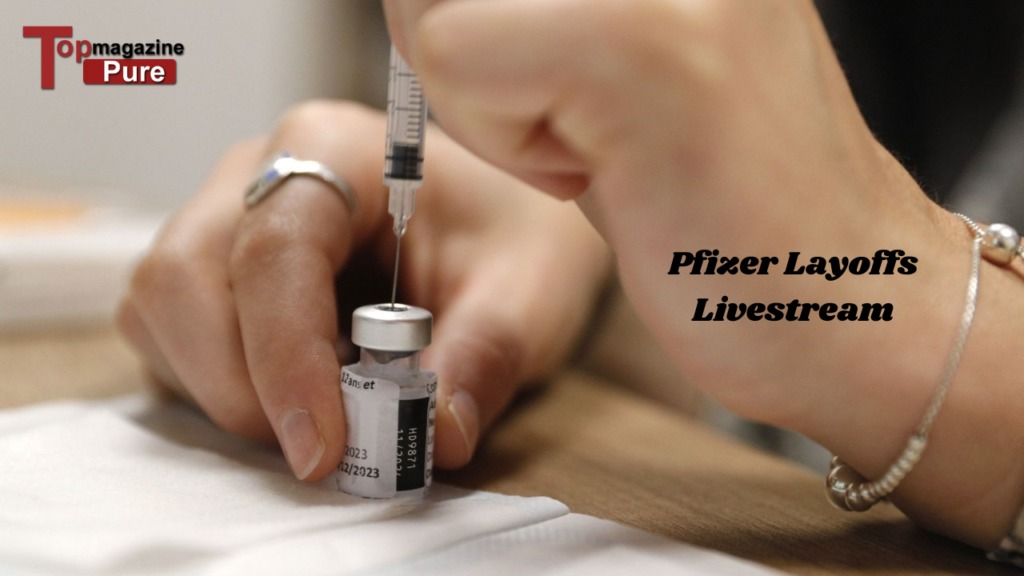Introduction to Pfizer Layoffs Livestream
The pharmaceutical giant Pfizer, known for its groundbreaking contributions to healthcare and pivotal role in producing the COVID-19 vaccine, has recently made headlines with announcements of significant layoffs. The company’s decision to reduce its workforce has drawn attention from industry insiders, employees, and the public alike. In an age where transparency is increasingly demanded, the idea of a Pfizer layoffs livestream has emerged as a possible approach for the company to address widespread concerns. This article explores the details surrounding Pfizer’s layoffs, the concept of a livestream for communicating corporate changes, and the potential impact on employees, shareholders, and the pharmaceutical industry.
The Context Behind Pfizer’s Layoffs
Pfizer’s layoffs have come with the pharmaceutical industry undergoing several transformations. While Pfizer saw remarkable growth during the COVID-19 pandemic due to its vaccine development, the company is now facing declining demand for its pandemic-related products. With global vaccination rates stabilizing and new competitors entering the market, Pfizer’s revenues have seen a shift. As a result, the company has taken steps to reduce costs and streamline its operations, leading to the announcement of layoffs.
The layoffs are not isolated to Pfizer alone; they reflect a broader trend across the pharmaceutical industry, where companies are reassessing their workforce and investments in the wake of the pandemic. While layoffs are often seen as a negative development, they are sometimes necessary for companies to remain competitive and sustainable in an ever-evolving market.
Pfizer Layoffs Livestream: A New Approach to Transparency?
The idea of a Pfizer layoffs livestream raises important questions about how companies communicate major decisions to their employees and the public. Traditionally, layoffs have been announced through internal memos, press releases, or meetings. However, live streams have become a popular medium for real-time communication in an increasingly digital world.
A livestream could provide Pfizer with a platform to explain the reasoning behind the layoffs, outline future strategies, and offer support to affected employees. It would allow company executives to address questions and concerns directly, fostering a sense of transparency and accountability. A live stream could clarify employees facing uncertainty, even though the news may be difficult to hear.
The Impact of a Pfizer Layoffs Livestream on Employees
For employees, the announcement of layoffs is always a challenging experience, no matter how it is communicated. However, a Pfizer layoffs livestream could offer some advantages. One benefit is that a livestream can provide real-time updates, eliminating the delay and confusion that often arise from traditional communication methods. Employees could hear directly from leadership, ensuring no room for misinterpretation.
Another potential benefit is the opportunity for interaction. A livestream could include a question-and-answer session where employees could voice their concerns or ask for further clarification. While this may not ease the emotional burden of losing a job, it could create an environment of openness and support, showing that Pfizer values its workforce even in difficult times.
However, there are also potential downsides to this approach. Some employees may find a public announcement of layoffs through a live stream impersonal or insensitive. Losing a job is an intensely personal experience; broadcasting it publicly could heighten feelings of vulnerability or frustration. Companies need to carefully balance the benefits of transparency with the emotional well-being of their employees when considering such an approach.
The Role of Livestreams in Corporate Communications
The use of live streams in corporate settings is a concept that has been introduced previously. Still, it has gained traction in recent years, particularly during the COVID-19 pandemic when in-person meetings became impractical. Companies have used live streams for shareholder meetings, product launches, and internal communications. A Pfizer layoffs livestream would extend this trend, applying the technology to a sensitive and impactful business decision.
The advantages of live streaming corporate communications are clear. It allows companies to reach a broad audience quickly, offers immediacy, and enables viewer interaction. In Pfizer’s case, a livestream could be a way to control the narrative surrounding the layoffs, ensuring that employees, investors, and the public receive the same message simultaneously.
However, live streams also come with risks. They are live, meaning there is no opportunity to edit or carefully curate the message before it goes public. A livestream could lead to miscommunications or adverse public relations outcomes if handled poorly. It requires a high level of preparation and a clear communication strategy to ensure the message is delivered effectively.
Investor Reactions to the Pfizer Layoffs Livestream
Investors are crucial in how a company handles significant operational changes like layoffs. For shareholders, Pfizer’s decision to reduce its workforce will likely be part of a broader effort to cut costs and improve profitability. A Pfizer layoffs livestream could allow the company to reassure investors by explaining how the layoffs fit into its long-term strategy.
By addressing investors directly, Pfizer could outline its vision for future growth, highlight areas where it plans to invest, and provide financial forecasts that justify the layoffs. Investors will likely appreciate the transparency, as it gives them insight into the company’s decision-making process and clarifies the future.
On the other hand, layoffs can sometimes create negative perceptions among investors, mainly if they believe the company is struggling. A livestream effectively communicating the rationale behind the layoffs could increase confidence in Pfizer’s management. The company must walk a fine line between reassuring investors and addressing the concerns of employees and the public.
Public Perception and Media Coverage of the Pfizer Layoffs Livestream
The way Pfizer handles its layoffs, including the possibility of a livestream, will undoubtedly impact public perception. As one of the world’s largest and most well-known pharmaceutical companies, Pfizer’s decisions are closely watched by the media and the public. Using a live stream could attract significant media attention, both positive and negative.
On the positive side, a Pfizer layoffs livestream could be seen as a step towards greater transparency in corporate America. In an era where trust in large corporations is often low, companies prioritizing open communication are more likely to maintain a positive public image. Pfizer could frame the livestream as part of its commitment to corporate responsibility, showing that it is willing to engage directly with the public on challenging issues.
However, the media could also focus on the negative aspects of the layoffs, mainly if the livestream does not go smoothly or if it is seen as a public relations move rather than a genuine effort to support employees. Pfizer must be prepared for media scrutiny and ensure its messaging is clear, compassionate, and consistent.
The Broader Implications of Pfizer’s Layoffs
The layoffs at Pfizer are part of a broader trend in the pharmaceutical industry, where companies are adjusting their workforce in response to changing market dynamics. While the pandemic initially led to a surge in demand for vaccines and treatments, the industry is now grappling with post-pandemic realities, including lower demand and increased competition.
For Pfizer, the layoffs represent a strategic move to remain competitive and ensure long-term profitability. However, the decision also raises questions about the future of the pharmaceutical workforce and how companies will adapt to new challenges in healthcare and medicine. A Pfizer layoffs livestream could provide insight into these broader industry trends and help shape the conversation about the future of work in the pharmaceutical sector.
Conclusion
The Pfizer layoffs livestream concept reflects how companies adapt their communication strategies in the digital age. While the layoffs are a complex and sensitive topic, using a live stream could allow Pfizer to be transparent, address concerns, and explain its long-term vision. However, the success of such an approach depends on careful planning and a genuine commitment to open communication. As Pfizer navigates these layoffs, how it chooses to communicate with its employees, investors, and the public will play a crucial role in shaping its reputation and future success.







